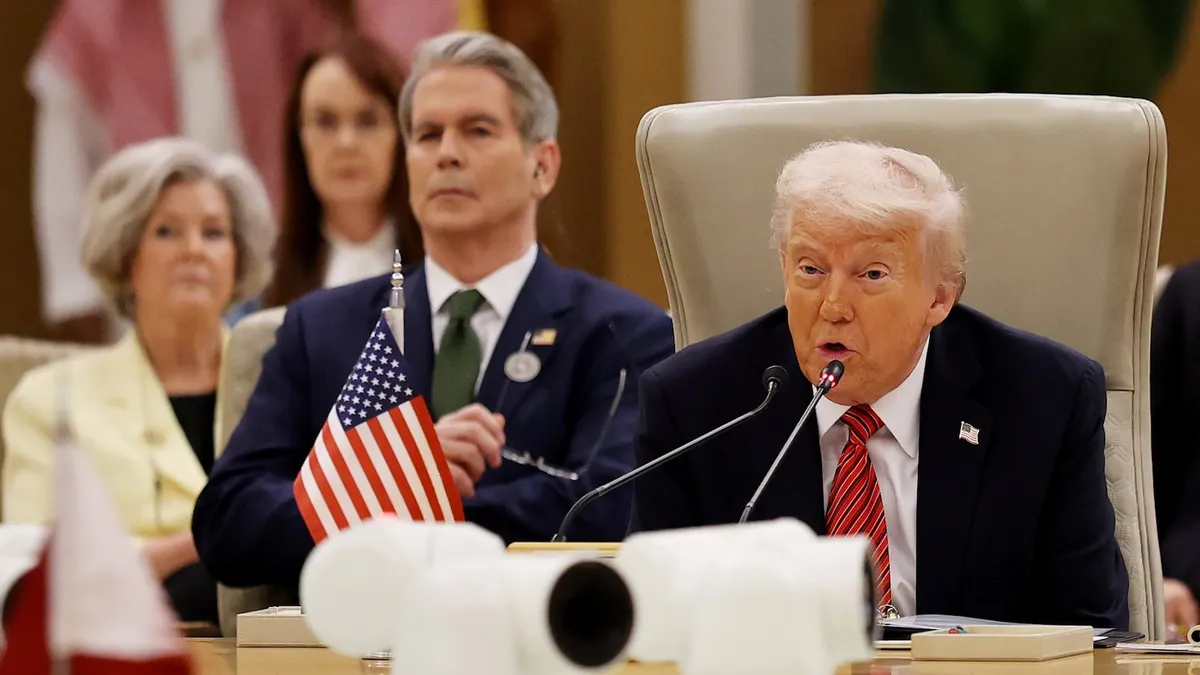
President Donald Trump is set to sign an executive order on Monday to delay the implementation of steep tariffs on numerous countries, originally scheduled to take effect on Wednesday. The announcement from the White House indicates that Trump's reciprocal tariffs will now be postponed until August 1, as confirmed by White House press secretary Karoline Leavitt during a press briefing.
In a related development, Trump has announced a 25% tariff on imports from South Korea and Japan, which will also take effect at the start of August. Additionally, twelve other countries will receive notifications on Monday regarding their new tariff rates. This delay follows Trump's earlier decision in April to suspend these tariffs, with a promise to negotiate around 90 trade deals within 90 days. However, the White House has only managed to secure trade agreements with the United Kingdom and Vietnam, along with a preliminary accord with China.
Leavitt emphasized that the administration's goal is to secure the best possible trade deals for the American people and workers. The reinstatement of these tariffs could lead to significant increases in levies on various trade partners, with examples including a staggering 49% tariff on Cambodia and a 37% tariff on Bangladesh. Here’s a closer look at Trump’s tariff deadline and its implications.
The July 9 tariff deadline originates from Trump’s “Liberation Day” announcement made on April 2, during which he imposed country-specific levies on the majority of U.S. trading partners. Following this announcement, the major stock indexes experienced a dramatic decline, losing approximately $3.1 trillion in value—the largest one-day drop since the beginning of the COVID-19 pandemic. Shortly thereafter, Trump suspended the country-specific tariffs for 90 days, resulting in one of the largest single-day gains in the market's history.
As the 90-day suspension was set to expire on Wednesday, many nations targeted by the tariffs had not yet reached a trade agreement with the U.S., raising concerns that the reinstatement of the tariffs could trigger another stock market selloff.
The White House has announced plans to push back the July 9 deadline, following comments from U.S. Treasury Secretary Scott Bessent who indicated that letters would be sent to around 100 countries warning them of the high tariffs that could return as of the start of August. In these letters, countries will be informed that failure to progress in negotiations could result in the reintroduction of tariffs established on April 2.
Trump further confirmed these plans through social media, indicating that the White House would soon distribute "UNITED STATES TARIFF Letters." In a separate post, he suggested the possibility of an additional 10% tariff on countries aligning with BRICS nations, indicating that his commitment to imposing tariffs remains steadfast. The BRICS nations, which include founding members like Brazil, Russia, India, and China, have expressed serious concerns regarding unilateral tariffs.
In recent weeks, Trump has rolled back some of his more extreme tariffs, although certain tariffs remain in legal limbo due to federal court rulings from May. However, the existing tariffs are still enforced. A recent trade agreement between the U.S. and China has significantly reduced tit-for-tat tariffs between the two largest economies in the world. Despite this, a general 10% tariff is still applicable to most imports, excluding semiconductors, pharmaceuticals, and other specific items.
Goods imported from Mexico and Canada are subject to a 25% tariff, with exceptions for products covered under the United States-Mexico-Canada Agreement (USMCA). Additionally, Trump has previously indicated plans to double tariffs on steel and aluminum. Tariffs on automobiles and their parts remain in effect as well.
Research strategist Jim Reid from Deutsche Bank noted in a memo to clients on Monday that the current effective tariff rate stands at approximately 15%. Although this represents a decrease from the levels seen on Liberation Day, it is still significantly higher than the low single digits prior to Trump taking office. Reid expressed skepticism regarding the durability of the August 1 deadline, suggesting that it might be viewed as the new July 9.